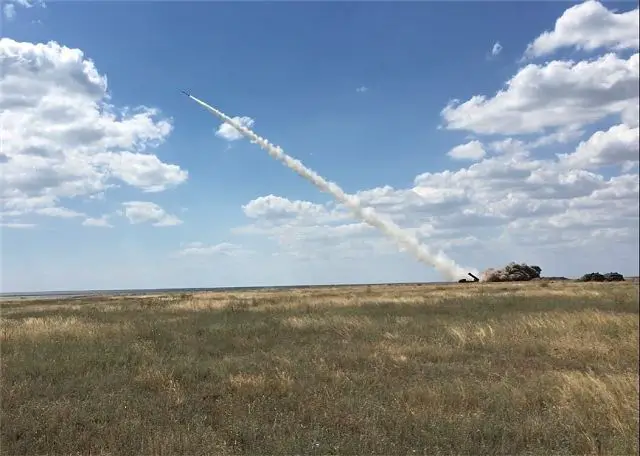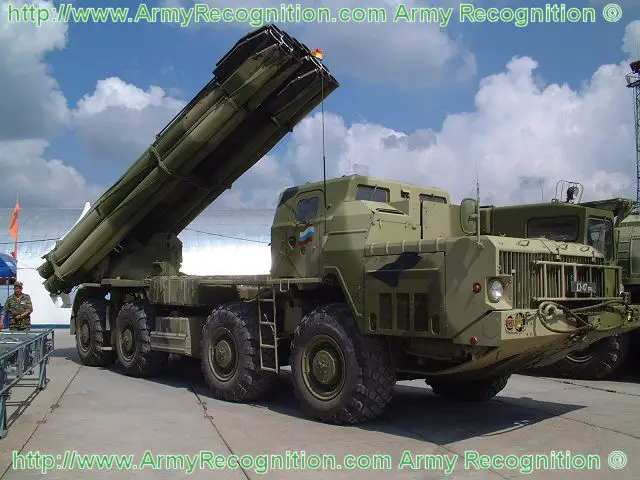Breaking news
Ukrainian army has successfully test-fires new guided missile Vilha from BM-30 Smerch MLRS 12708161.
|
|
|||
|
Defence & Security News - Ukraine
|
|||
|
|
|||
|
Ukrainian army has successfully test-fires new guided missile Vilha from BM-30 Smerch MLRS.
|
|||
|
Ukrainian army has test-fired a new guided missile "Vilha" from Soviet-made BM-30 Smech MLRS (Multiple Launch Rocket System). Ukrainian military officials said that he missile has a range of up to 300 kilometers, and can be armed with various types of warheads, including nuclear.
|
|||
|
|
|||
 The new guided missile Vilha fires from the Soviet-made BM-30 Smerch MLRS. (Photo facebook www.facebook.com/yuri.biriukov) The new guided missile Vilha fires from the Soviet-made BM-30 Smerch MLRS. (Photo facebook www.facebook.com/yuri.biriukov) |
|||
|
|
|||
|
According to Ukrainian media, the new Vilha missile is fully designed by the local defense industry and can be produced without any components made in Russia. The missile can be launched in less than 38 seconds.
Video and pictures released on Internet, show that the new missile was launched from a MAZ-543 self-propelled launcher, which is the same vehicle used by the BM-30 Smerch Multiple Launch Rocket System (MLRS). The Vlha missile uses a GPS-based inertial guidance and correction system, created by the Kiev-based Luch Design Office. For some Russian military analysts, the new Ukrainian missile is actually nothing more than an upgrade of standard rockets used by the BM-30 Smerch MLRS, but the missile is more accuracy using satellite navigation data while the old Soviet rockets were based on the so-called inertial correction system, which provides for angular stabilization of the round at the boost phase, plus correction in distance through adjustments up to the separation of the round. The BM-30 Smerch 9A52 is a Soviet-made heavy multiple rocket launcher. It was first seen by the West in 1983, and it entered in the Russian army in 1987. The rocket used is of 300 mm calibre, fitted with a `self-contained powered-flight phase control system which provides an increase in fire precision by a factor of two and in accuracy by a factor of three as compared to unguided rockets'. Minimum range is 20,000 m and maximum range 70,000 m. The latest variant of the multiple rocket launchert system BM-30 is the Smerch-M with the launcher vehicle 9A52-2. The Smerch-M is equipped now with the Vivariy automated fire-control system, which can function automatically or under manual control.Smerch-M can fired a large types of rockets, as the 9M55K which carries 72 unguided fin-stabilised high-explosive fragmentation sub-munitions, the 9M55K1 which carries five parachute-retarded MOTIV-3F top-attack anti-armour submunitions, the 9M55K4 which carries 25 anti-tank mines, the 9M55F an unitary warhead with a charge of 95,5 kg of high explosive, the 9M55S a fuel air explosive munition, and the 9M55K5 with 646 shaped charge fragmentation submunitions that are dispensed over the target. The BM-30 Smerch-M 9A52-2 can fired at a maximum range of 90 km. |
|||
|
|
|||
 Russian army BM-30M 300mm MLRS (Multiple Launch Rocket System) Russian army BM-30M 300mm MLRS (Multiple Launch Rocket System) |
|||



















